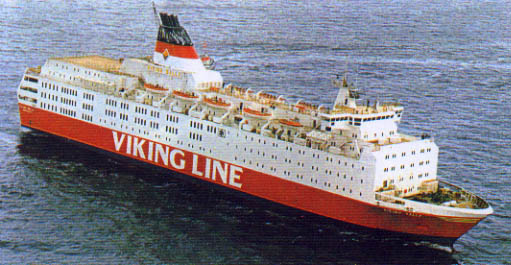
2.4
Contracting and Construction

The vessel was built under Hull No. S 590 by Meyer Werft as a car/ passenger ferry for the Finnish AB Sally, Mariehamn under the supervision of the Classification Society Bureau Veritas and the Finnish Board of Navigation. She was delivered to her owners in June 1980.
Technical details in comparison to her near-sister DIANA II:
| VIKING SALLY | DIANA II | |
| Hull No. | S 590 | S 592 |
| GRT | 15 566 | 11 537 |
| NRT | 8 372 | 6 156 |
| tdw | 3 345 | 2 400 |
| length (upon delivery) | 155,40 m | 137,0 m |
| breadth | 24,20 m | 24,20 m |
| draught (max.) | 5,60 m | 5,45 m |
| engine output | 17 563 kW | 17 609 kW |
| speed | 21,0 kn | 21,5 kn |
|
propellers
|
2 pitch propellers (KAMEWA) |
2 pitch propellers (KAMEWA) |
In the foreship area the vessels were more or less identical. Only the bulbous bow and consequently also the bow ramp of VIKING SALLY were longer. As usual with this type of vessel and in conformity with the state-of-the-art prevalent at that time the upper part of the closed bow ramp extended into the so-called ramp house on the forecastle which was part of the visor. As the bow ramp of VIKING SALLY was longer than the bow ramp of the DIANA II the ramp house had to be built comparatively higher.
Also VIKING SALLY was built for the Viking Line service between Turku, Mariehamn and Stockholm, i.e. the longer part of the voyage was leading through the archipelago off the Finnish west coast, respectively off the Åland Islands. The longest distance across the open sea was between the exit of the Åland archipelago and the northern entrance to the Stockholm archipelago (Söderarm) viz. 28 nm, i.e. the vessels were never more than 14 nm away from the nearest land or, in SOLAS terms, the vessels were always sailing in "sheltered waters".
More details about VIKING SALLY can be taken from the article in the maritime publication 'Hansa' No. 19/1980, pages 1507-1511, attached as Enclosure 2.4.10.